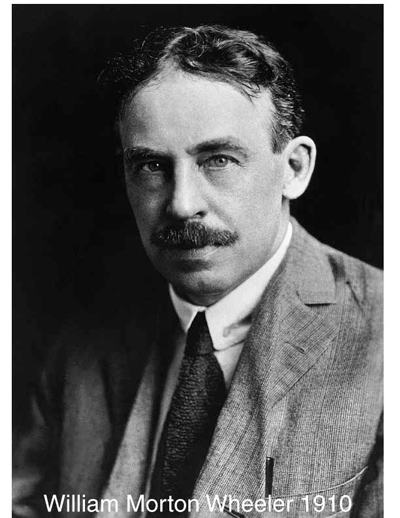<Back to Index>
- Entomologist William Morton Wheeler, 1865
- Sculptor Gaston Lachaise, 1882
- Lieutenant Colonel of the SS Karl Adolf Eichmann, 1906
PAGE SPONSOR
ΕΚΛΟΓΕΣ 2012
Τυπώστε και Ψηφίστε

William Morton Wheeler, Ph.D. (March 19, 1865 - April 19, 1937) was an American entomologist, myrmecologist and Harvard professor.
Born as the son of Julius Morton and Caroline Georgiana Wheeler (née Anderson) in Milwaukee, he was transferred from public school to a local German academy due to, in his own words, "persistently bad behavior". They had a small museum which Wheeler had studied since he was a child, and when Ward's Natural Science Establishment in early 1884 brought a collection of stuffed and skeletonized animals to the academy, to persuade the city fathers to purchase them, Wheeler volunteered to spend the nights in helping Ward to unpack and install the specimens. The latter was so impressed that he offered Wheeler a job in his Rochester, New York establishment. Here he identified birds and mammals, and later collections of shells, echinoderms and sponges. His shell catalogue was still in use by collectors in the late 1920s.
Wheeler was trained as an insect embryologist, having studied under Baur, Dohrn and Whitman, but he became the leading authority on the behaviour of social insects, achieving particular renown for his studies of social behaviour of ants. He was instrumental in the development of ethology and first popularized the term in a 1902 paper in Science.
He was a taxonomist and was responsible for the descriptions of innumerable species, Pogonomyrmex maricopa, the most venomous insect in the world, being among them. Professor Wheeler was curator of invertebrate zoology in the American Museum of Natural History in New York from 1903 to 1908. He was elected to the National Academy of Sciences.
A close contact of the British myrmecologist and coleopterist Horace Donisthorpe, it was to Wheeler that Donisthorpe dedicated his first major book on ants in 1915. Donisthorpe and Wheeler also frequently exchanged specimens, leading the latter to first develop the idea that the Formicinae subfamily had its origins in North America.
He was professor of applied biology at Harvard University's Bussey Institute, which had one of the most highly regarded biology programs in the United States. One of his pupils there was Alfred Kinsey.
His work includes 467 titles.